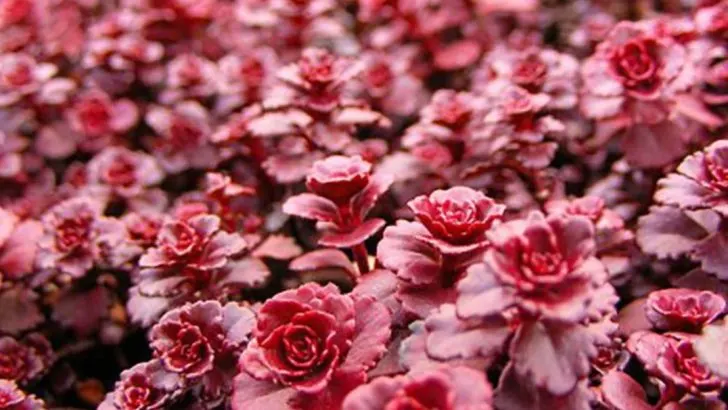Dahlias are undeniably the stars of many summer gardens—bold, dramatic, and bursting with color. But like any showstopper, they shine even more when surrounded by a carefully chosen supporting cast. Enter ground covers: low-growing plants that not only fill in bare soil but also enhance the beauty of dahlias by providing contrast, texture, and harmony.
Whether you’re aiming for lush greenery, delicate blooms, or a carpet of color, these 14 ground covers are ideal companions for dahlias. They help retain soil moisture, suppress weeds, and create a polished, layered look without stealing the spotlight. From soft creeping thyme to vibrant sweet alyssum, these picks bring structure and beauty to any dahlia-filled garden.
Creeping Thyme
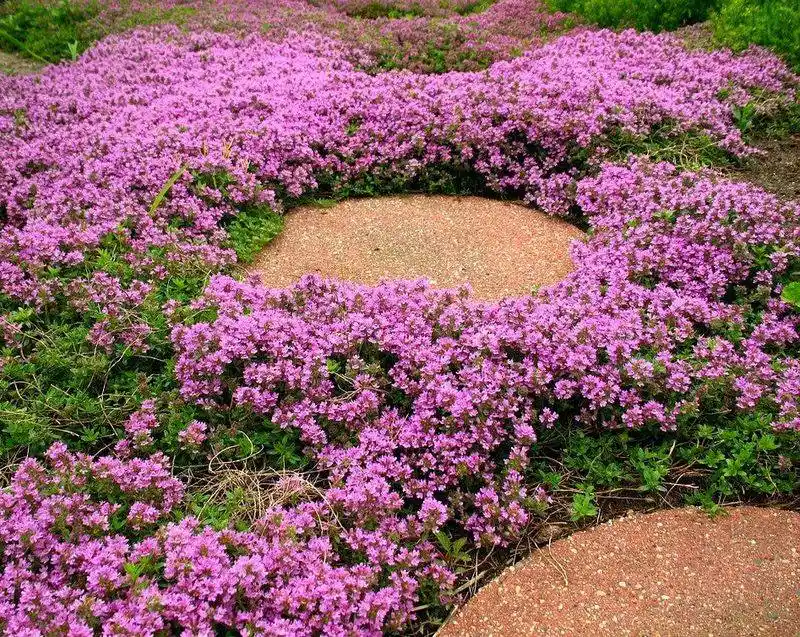
Imagine a gentle minty aroma wafting through your garden. Creeping thyme offers not just an olfactory treat but also a visual delight with its tiny purple blooms. These petite flowers create a soft carpet that contrasts beautifully with the bold heads of dahlias. Their drought-resistant nature means less watering, making them an easy-care option for gardeners. Moreover, creeping thyme attracts beneficial insects, enhancing the ecological balance in your garden. Perfect for sunny spots, this ground cover can thrive in poor soil, offering a resilient and charming backdrop to your floral display.
Sweet Woodruff

Enter the realm of forest charm with sweet woodruff. This ground cover thrives in shady areas, making it an ideal companion for dahlias planted under taller shrubs or trees. Its tiny white star-shaped flowers add a touch of elegance, while its fresh scent evokes memories of woodland walks. Sweet woodruff is not only visually appealing but also serves a practical purpose by suppressing weeds. Ideal for those looking to create a serene and tranquil garden space, its presence under the bold blooms of dahlias creates a harmonious balance.
Lamb’s Ear
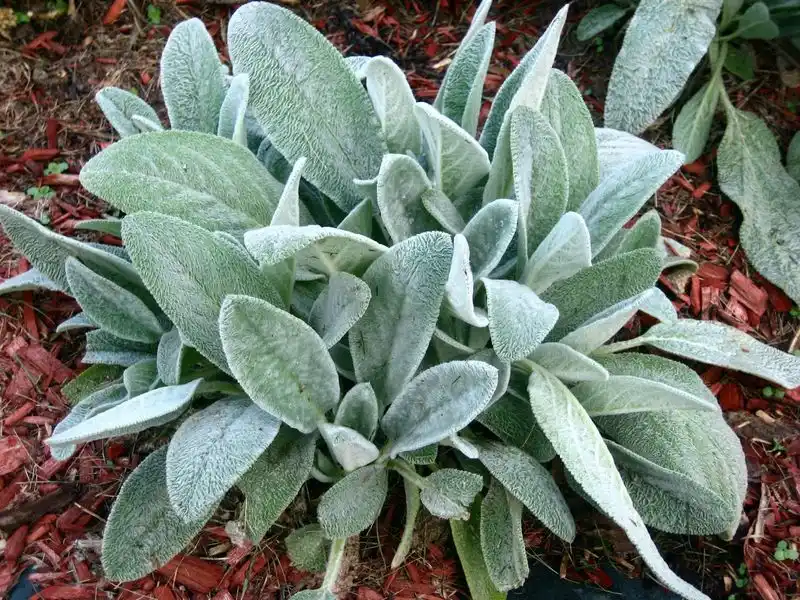
Soft as a whisper, lamb’s ear offers a tactile experience with its velvety leaves. This ground cover is adored for its silvery foliage that beautifully contrasts with the vibrant colors of dahlias. Its texture invites gentle touch, making it a favorite in sensory gardens. Besides its aesthetic appeal, lamb’s ear is hardy and drought-tolerant, a boon for regions with dry spells. Its low-growing habit ensures that it doesn’t compete with dahlias for attention, instead providing a soft, silver backdrop that highlights the colorful blooms above.
Creeping Jenny

Golden hues of creeping Jenny weave a tapestry of light across your garden bed. This vigorous ground cover thrives in moist conditions, creating a lush backdrop for dahlias. Its round leaves catch sunlight, adding warmth to any garden scene. Easy to care for, creeping Jenny spreads quickly, providing excellent coverage and reducing weed growth. Its vibrant foliage contrasts perfectly with the rich colors of dahlias, creating a striking visual effect. Whether cascading over edges or weaving between plants, it brings a cheerful vibrancy to your garden’s palette.
Periwinkle (Vinca Minor)
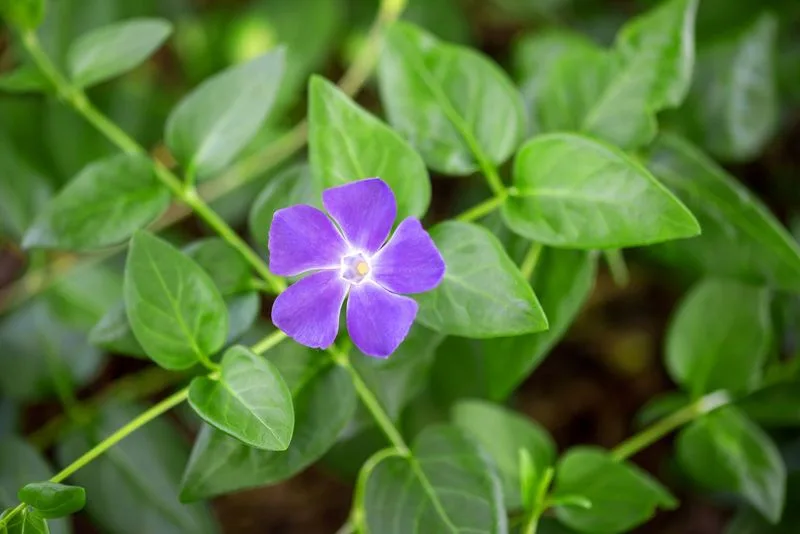
Periwinkle, or Vinca Minor, graces gardens with its glossy leaves and charming blue flowers. Known for its tenacity, this ground cover thrives in shaded areas, providing a lush carpet beneath dahlia plants. Its evergreen nature means it offers year-round interest, even when dahlias take their winter rest. Periwinkle’s rapid growth helps control weeds, while its trailing habit adds a natural, flowing aesthetic. A reliable performer, it pairs beautifully with the structured blooms of dahlias, creating a garden scene that’s both dynamic and soothing.
Ajuga (Bugleweed)
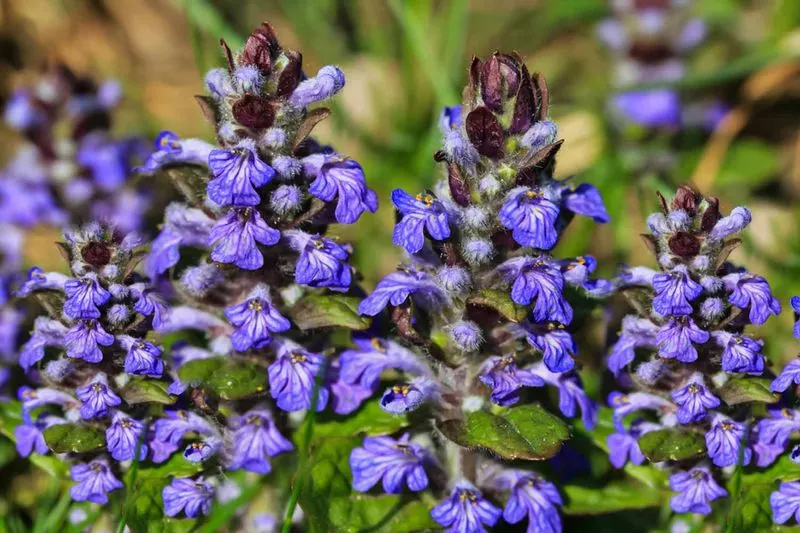
Transform your garden with the dramatic foliage of ajuga, also known as bugleweed. Its rich, deep hues range from purple to bronze, providing a striking contrast to vibrant dahlia blooms. Ajuga’s low-growing habit and spreading nature make it an effective ground cover that suppresses weeds while adding texture. In spring, its spikes of blue flowers rise above the foliage, adding another layer of interest. Thriving in both sun and shade, ajuga is versatile and resilient, ensuring a vibrant and diverse garden throughout the growing season.
Dichondra ‘Silver Falls’
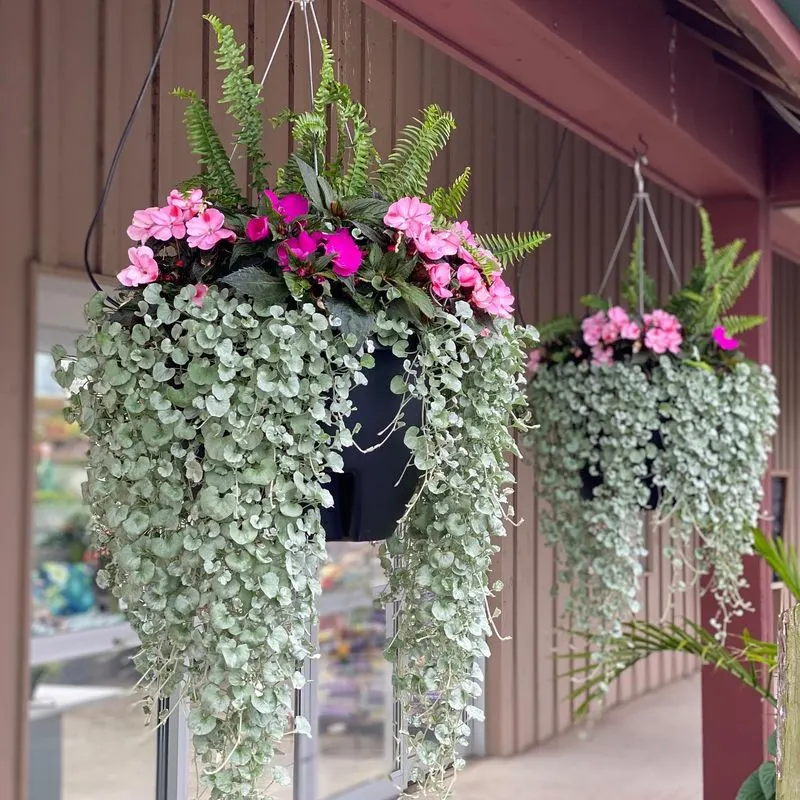
Dichondra ‘Silver Falls’ brings a cascade of silvery foliage to your garden. This trailing plant is perfect for creating a waterfall effect over edges or containers. Its delicate leaves shimmer in the sunlight, providing a contrasting backdrop to the bold and colorful dahlia flowers. Ideal for sunny spots, ‘Silver Falls’ requires minimal care, thriving in well-drained soils. Its creeping nature allows it to fill spaces efficiently, adding depth and dimension to garden designs. This ground cover’s elegant drape complements the upright stature of dahlias beautifully.
Mazus Reptans
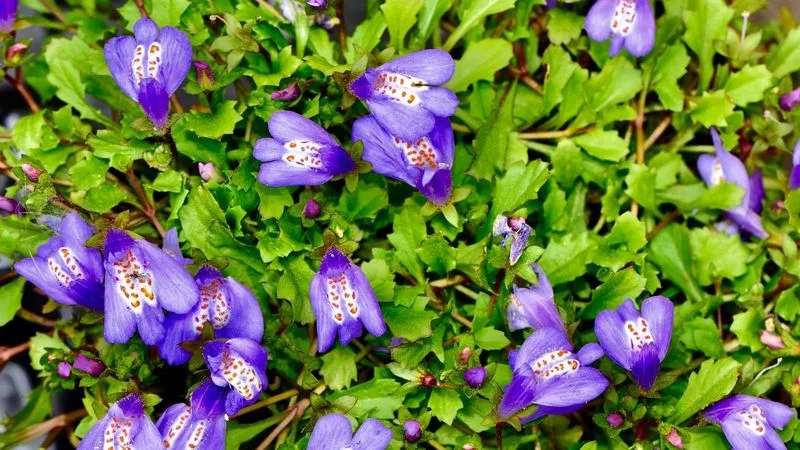
Mazus reptans spreads like a vibrant quilt across the garden floor. Known for its lush green foliage and small purple flowers, it creates a lively scene under towering dahlias. This ground cover thrives in moist, well-drained soil, making it an excellent choice for gardens with ample water. It’s perfect for filling in gaps, forming a dense mat that suppresses weeds. Mazus reptans’ rapid growth and spreading habit ensure a full and vibrant garden display. Together with dahlias, it crafts a lively and colorful tableau that changes with the seasons.
Sedum ‘Dragon’s Blood’
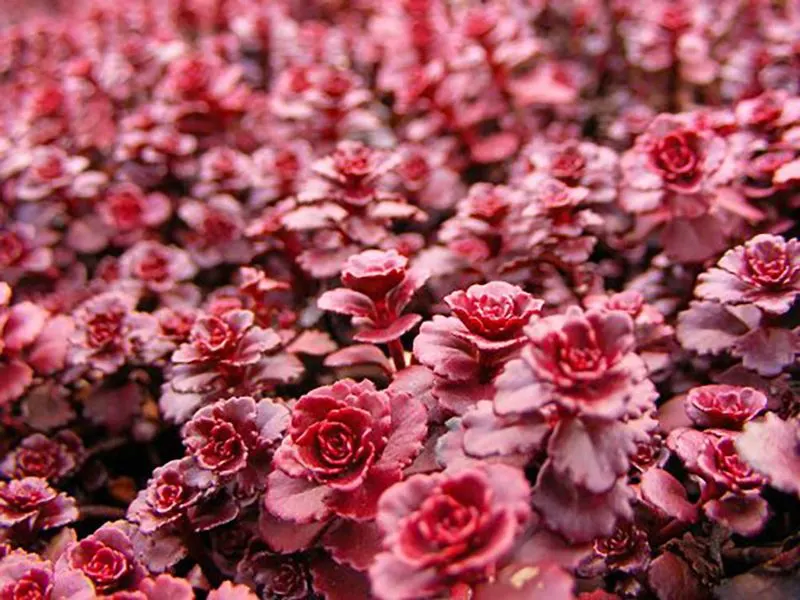
Sedum ‘Dragon’s Blood’ offers a rich tapestry of color with its red-tinted leaves and vibrant yellow flowers. This succulent-like ground cover thrives in sunny, dry areas, making it an ideal companion for heat-loving dahlias. Its fleshy leaves store water, reducing irrigation needs and adding resilience. As the seasons change, the foliage deepens in color, providing year-round interest. Sedum’s low-growing habit and spreading nature make it perfect for filling gaps, adding texture and color beneath the towering dahlia blooms, creating a dynamic and engaging garden scene.
Heuchera (Coral Bells)
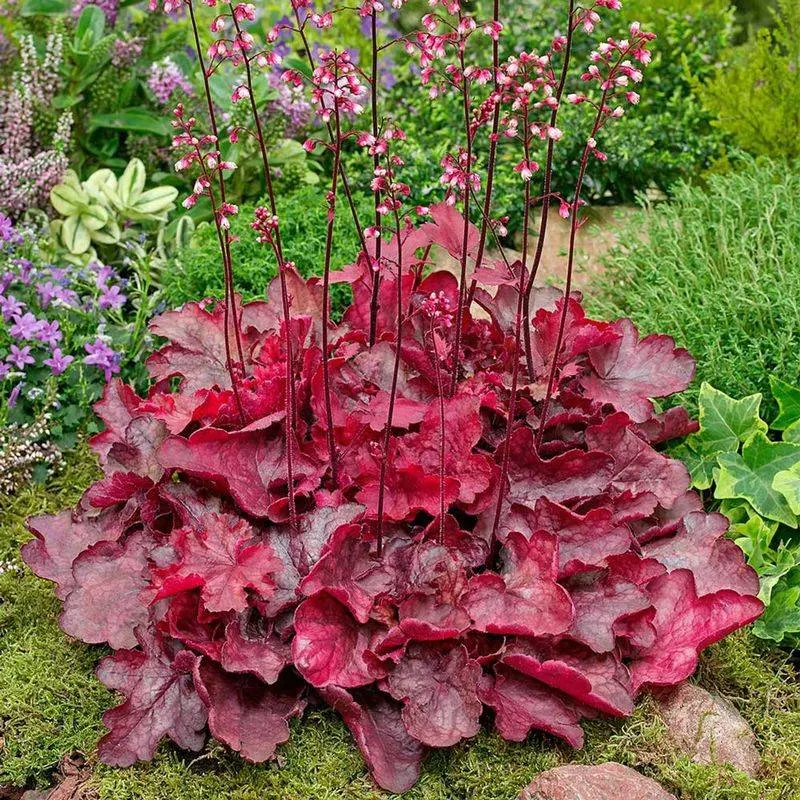
Heuchera, or coral bells, brings a kaleidoscope of foliage colors to the garden. With shades ranging from deep burgundy to lime green, its leaves offer a bold contrast to dahlia flowers. This ground cover thrives in partial shade, adding texture and color beneath taller plants. In spring, tiny bell-shaped flowers emerge, adding yet another layer of interest. Heuchera’s versatility and low maintenance make it a favorite among gardeners seeking to create diverse and dynamic plantings. Its vibrant foliage ensures your garden remains lively, even when dahlia blooms fade.
Japanese Forest Grass (Hakonechloa)
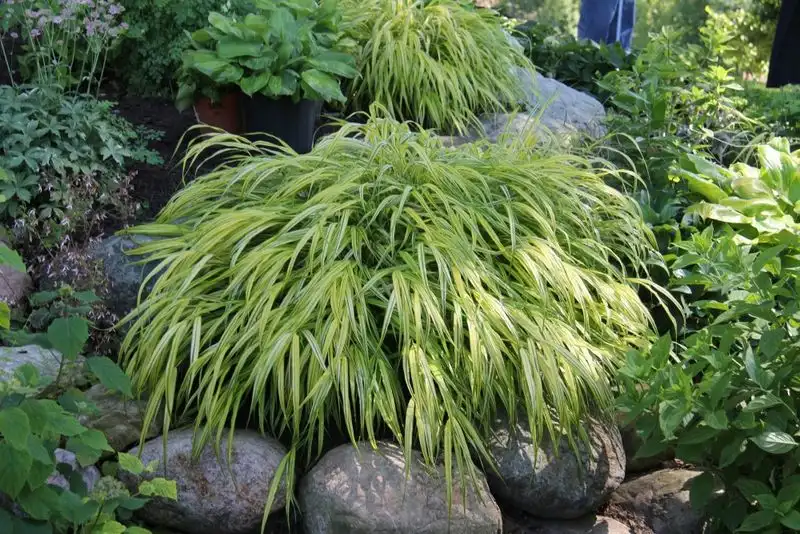
Japanese forest grass, or Hakonechloa, sways gently in the breeze, its green and gold blades adding movement to the garden. This adaptable ground cover thrives in shady spots, providing a lush, soft mat that pairs beautifully with the bold structure of dahlias. Its graceful arching form and bright hues offer a contrast to the rigid dahlia stems. Ideal for creating a serene and harmonious garden, Japanese forest grass adds texture and color without overwhelming the scene. Its slow-growing nature ensures it remains a subtle yet impactful presence.
Golden Creeping Sedum
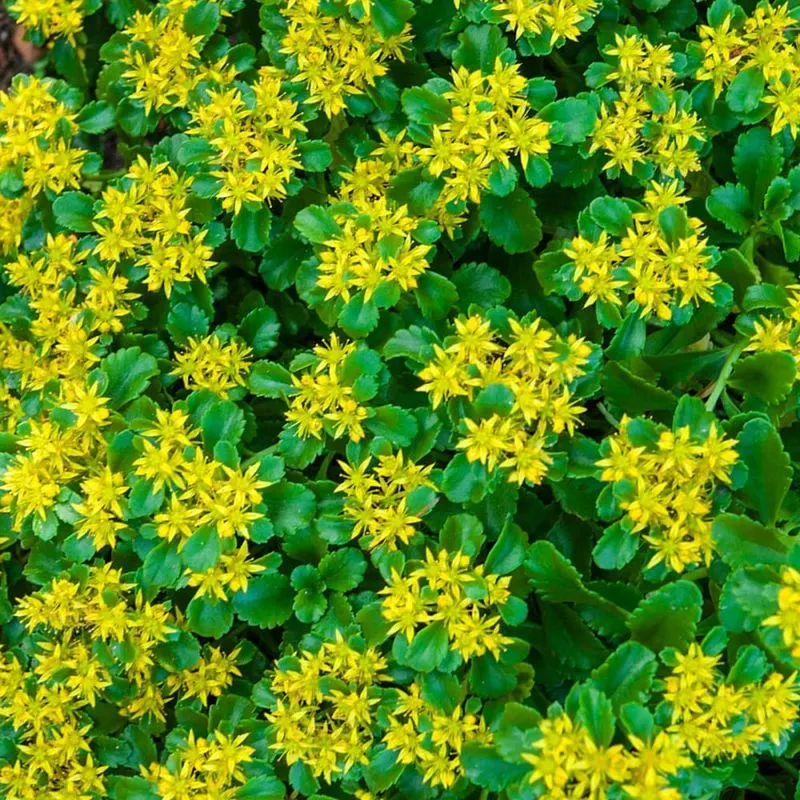
Bring the sunshine into your garden with golden creeping sedum. This ground cover dazzles with its bright yellow leaves, creating a striking contrast against dahlia blooms. Ideal for sunny, dry conditions, its succulent-like foliage stores moisture, reducing watering needs. In summer, tiny yellow flowers add to its charm, attracting pollinators and enhancing biodiversity. Its spreading habit ensures excellent ground coverage, filling gaps and suppressing weeds effectively. Golden creeping sedum’s vibrant color and low maintenance make it a favorite choice for gardeners seeking resilient beauty.
Irish Moss
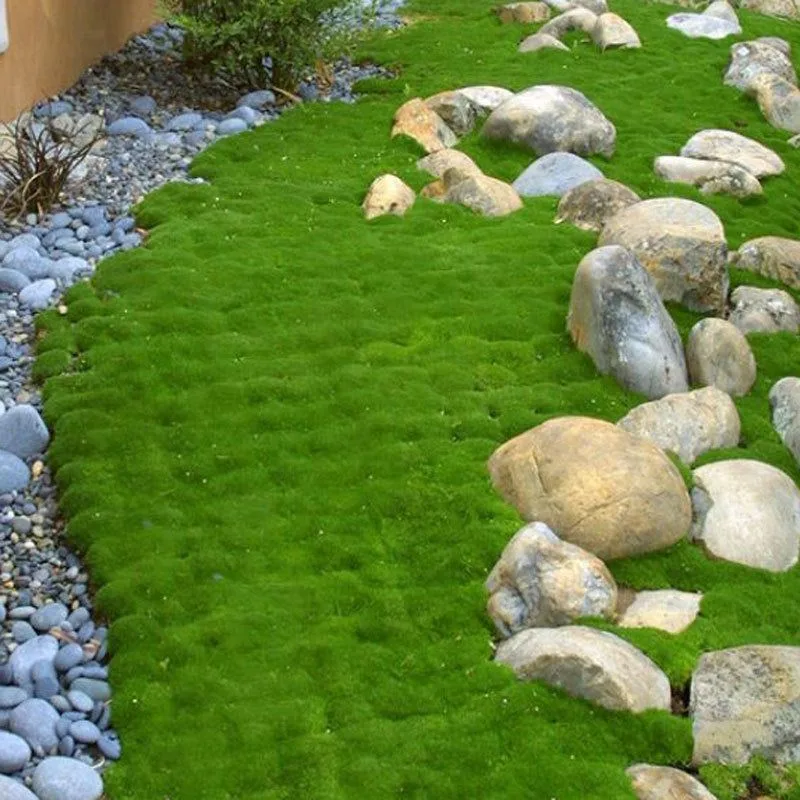
Irish moss creates a lush, green carpet that feels like walking on a cloud. This low-growing ground cover is perfect for filling spaces between stepping stones or covering the base of dahlias. Its dense mat of foliage is adorned with tiny white flowers in spring, adding a delicate charm to your garden. Irish moss thrives in moist, well-drained soil and is ideal for cool, shady spots. Its soft texture and vibrant color provide a gentle contrast to the bold dahlia blooms, creating a serene and inviting garden space.
Clover (Trifolium repens)
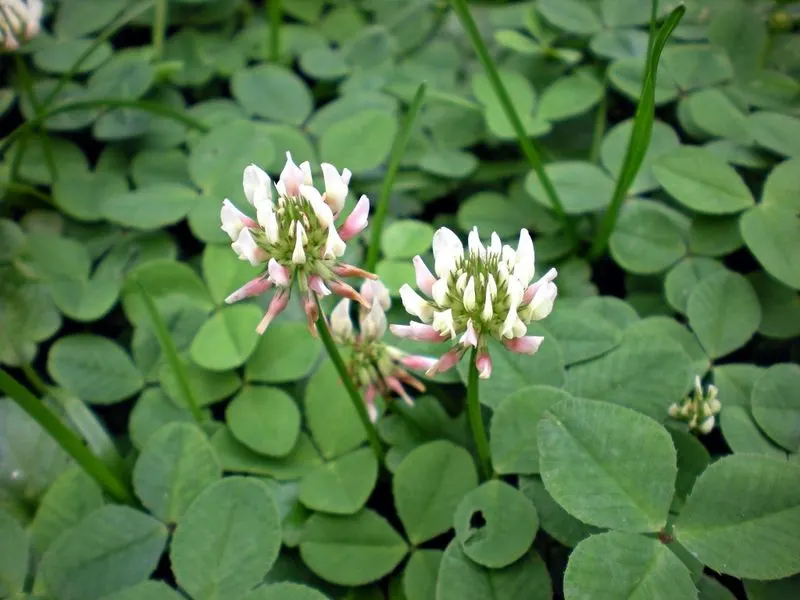
Clover, specifically Trifolium repens, brings a touch of pastoral charm to your garden. Known for its nitrogen-fixing properties, clover enriches the soil, benefiting dahlia growth. Its white flowers attract pollinators, enhancing biodiversity and creating a lively environment. Clover’s spreading habit ensures complete ground coverage, reducing weed growth and improving soil health. Ideal for sunny, well-drained areas, it provides a soft, green carpet that contrasts with the bold, vibrant dahlia blooms. This robust ground cover not only beautifies your garden but also supports a thriving ecosystem.

